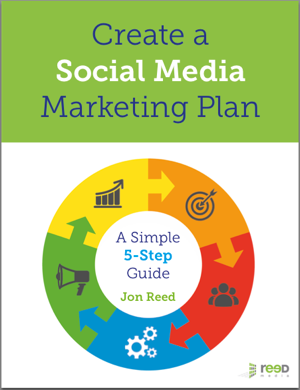Social media is one of the best ways to connect with readers, build a large, engaged audience – and promote your books. Whether you’re an author working on your own social media, or a publisher developing a social media presence for one of your authors, it pays to think strategically about what you want to achieve.
However, this is still surprisingly rare. Book-based social media is still incredibly prone to last-minute-ism, ‘throw stuff out and see what sticks’, and ‘same old same old’ copycat churn. So make sure you think through these eight elements when putting together a social media strategy, if you really want to see results.
1. Aims and objectives. What do you want to achieve from your use of social media? Don’t just think about book sales: think about building your online platform. That includes follower growth, email signups, raising your profile and positioning yourself as an expert. What are your long-term aims? To write a column? To give a TED Talk? Think big.
2. Measures of success. How will you know when you’ve succeeded? Decide in advance what success looks like for you – and what your ‘key performance indicators’ (KPIs) will be. These are likely to include clickthroughs, follower growth and engagement rate (average number of reactions per post per thousand followers, expressed as a percentage). Be specific. You might, for example, want to double your Instagram followers before your publication date.
3. Social media audit. Where are you now? Unless you’re starting from scratch, you probably have at least some social channels that you’ve been using – albeit perhaps not as frequently or effectively as you would like. Which platforms are you using? How many followers do you have on each? How does this compare with the number of people you follow (your follower ratio)? What type of content are you posting – and how frequently? What is your engagement rate? Consider doing a SWOT analysis (Strengths, Weaknesses, Opportunities, Threats). It can really give an honest picture of what’s going on and why.
4. Audience and competition. Who are you trying to reach? Where can you find them online? Think about the main market you want to reach, and any secondary markets. What platforms do they use, and what sort of accounts do they already follow? Look for similar accounts to your own – and follow their followers. This can be a great way of building your own follower numbers. Think about key influencers too – follow, like and retweet them. It’s not rocket science, but it takes time and grunt work. You can’t just assume ‘build it and they will come.’
5. Social media platforms. Which platforms will you use? Blog, podcast, Facebook, Twitter, Instagram, YouTube, Pinterest, LinkedIn? You don’t need to use everything – start small and focus on one or two that you will actually use. Your audience analysis will guide you as to which will be best for reaching your readers – but think too about what you are comfortable with and have time for. Write a one-page strategy for each, including platform demographics, content types you will post, your ‘calls to action’ and measures of success.
6. Content strategy. What types of content will you post? For example: quote cards (images overlaid with quotations, tips or facts from your book); ‘behind the scenes’ posts of the writer’s life; news and announcements; links to relevant blog posts and articles; and any specific promotions that you will run, such as hashtag contests. Put together a spreadsheet, with rows for each platform and columns for content types, frequency, calls to action and measures of success. Yes, it’s an extra layer of work. But if you want to be truly strategic, you need to do it.
7. Editorial timeline. When will you post this content? Some of your content will be ‘evergreen’ and can be posted anytime; some will be tied to critical dates, seasons – or even hashtag trends. You don’t need to plan this in excessive detail, but draw up a spreadsheet with months in the first column – from today until beyond your publication date. Include any important events, such as book festivals, launches or conferences. Then add a column for each platform you’re using, and specify what the focus of your content will be for each month.
8. Email strategy. Yes, this is a social media strategy. But I always include a section on email marketing. You need to build up your follower numbers – but you also need to build your email list. Email tends to be a more effective sales medium than, say, Twitter. Give people an incentive to sign up to your list – such as a sample chapter or free ebook – then promote it on social media. Make sure you collect the necessary consents for email marketing. These are stricter since the introduction of the EU’s General Data Protection Regulation (GDPR) in May 2018.
I tend to put together a document of up to 20pp, depending on the number of platforms – plus a couple of spreadsheets: a content strategy and a timeline. But you don’t necessarily need a huge amount of documentation in advance, or to launch into using every platform listed in your strategy at once. Your strategy is a living document that will evolve as your needs change over time. But one thing is sure: you do need one. Otherwise you can waste an awful lot of time and energy simply adding to the noise.
This post first appeared on FutureBook on 10 Sep 2018.

